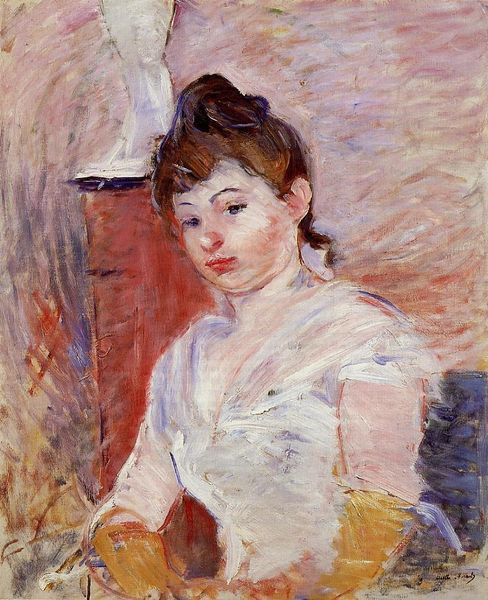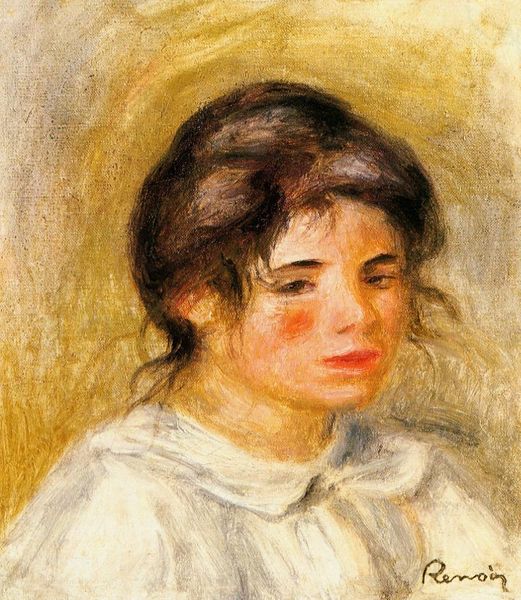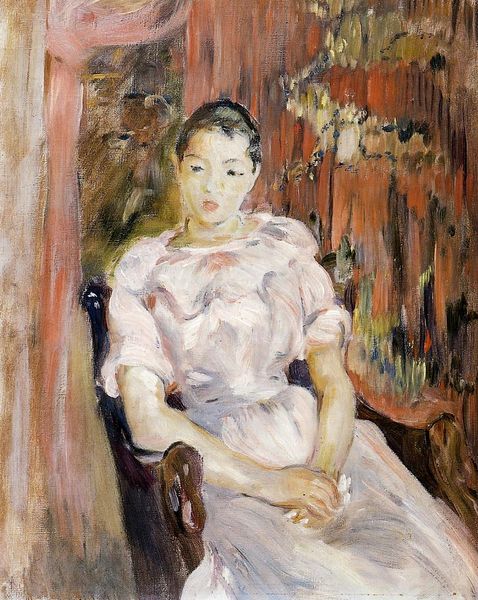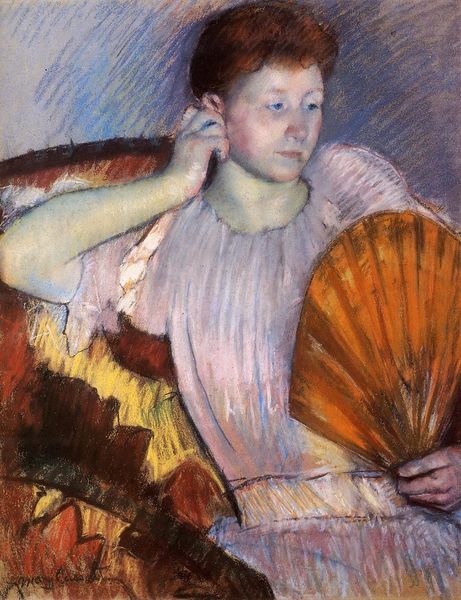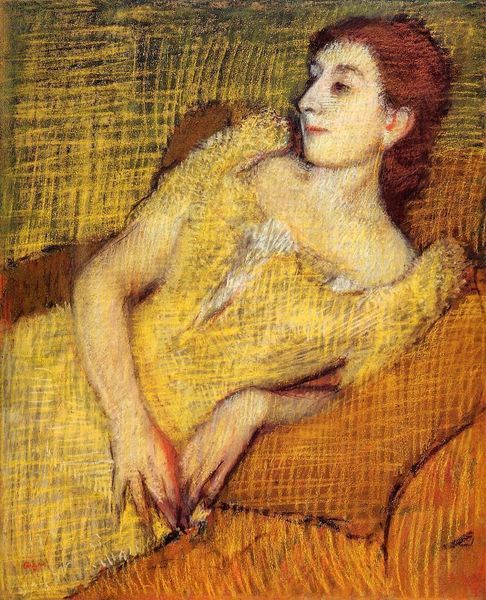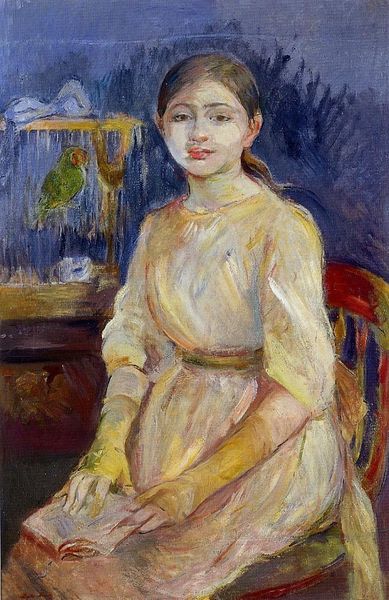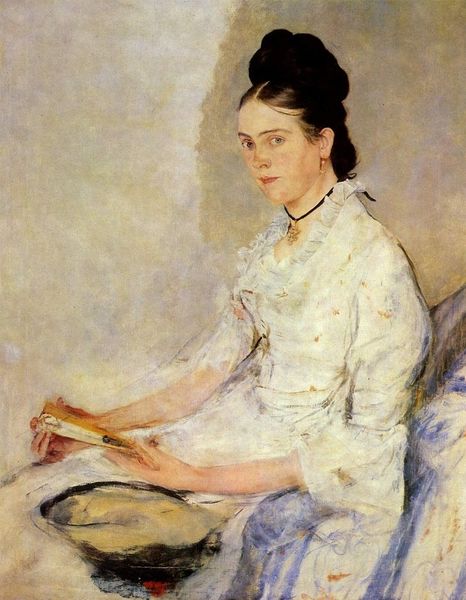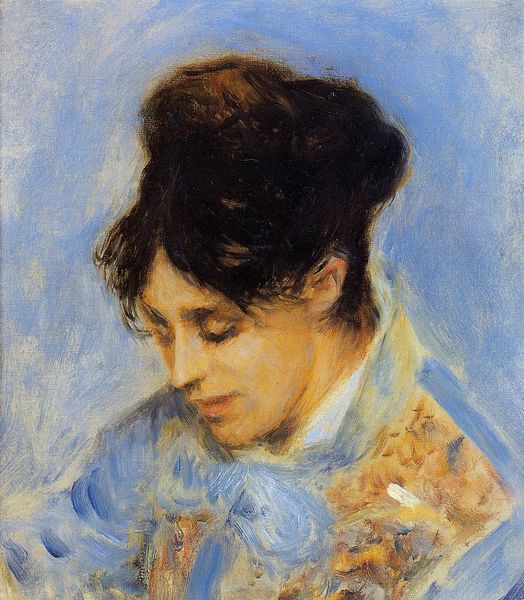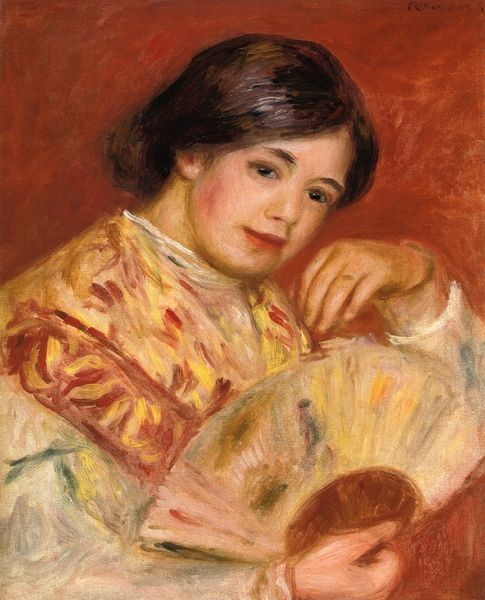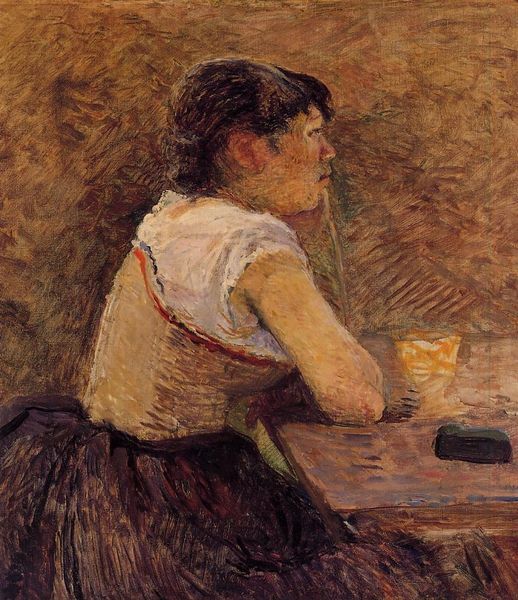
Copyright: Public domain
Editor: So, here we have Renoir's "Graziella," painted in 1910. It's an oil painting, a portrait... The colours are quite soft, and she seems lost in thought. What do you see in this piece? Curator: I see Renoir engaging with a recurring theme: the interior world of women. Notice how her downward gaze and the warmth of the palette evoke a sense of intimacy, even introspection. The whiteness of her dress and pearls may indicate innocence. Can you think of other ways he communicated femininity through symbolic objects? Editor: Perhaps the loosely defined brushstrokes suggest a sort of… ephemerality? A fleeting moment? It also gives a very ‘of-the-moment’ impression. Curator: Precisely. Consider this piece within the context of Impressionism, which often sought to capture transient moments and subjective experiences. This technique moves from direct depiction toward representing experience. It is of its time, certainly, but it continues artistic conventions reaching back centuries! Are there ways her presentation, the painting of the hair or expression, connect her with other painted portraits? Editor: Well, her hair is quite neatly arranged, but the softness almost makes it appear slightly undone. It contrasts a bit with the detail in her white dress, but is softened like the warm colors behind her. Curator: Think about how frequently women were portrayed and the standards by which they were portrayed, in painting, poetry, or societal writing. It invites us to consider how beauty and virtue are perceived. It is meant to invite self-examination and recognition in its audience, the symbolic content connecting deeply with those societal, gendered experiences. Editor: I hadn’t considered the painting that way, as engaging in conversations about standards of virtue and beauty! Thanks! Curator: A portrait transcends its subject; the subject carries with her a symbolic code. Thank you for discussing this with me.
Comments
No comments
Be the first to comment and join the conversation on the ultimate creative platform.

